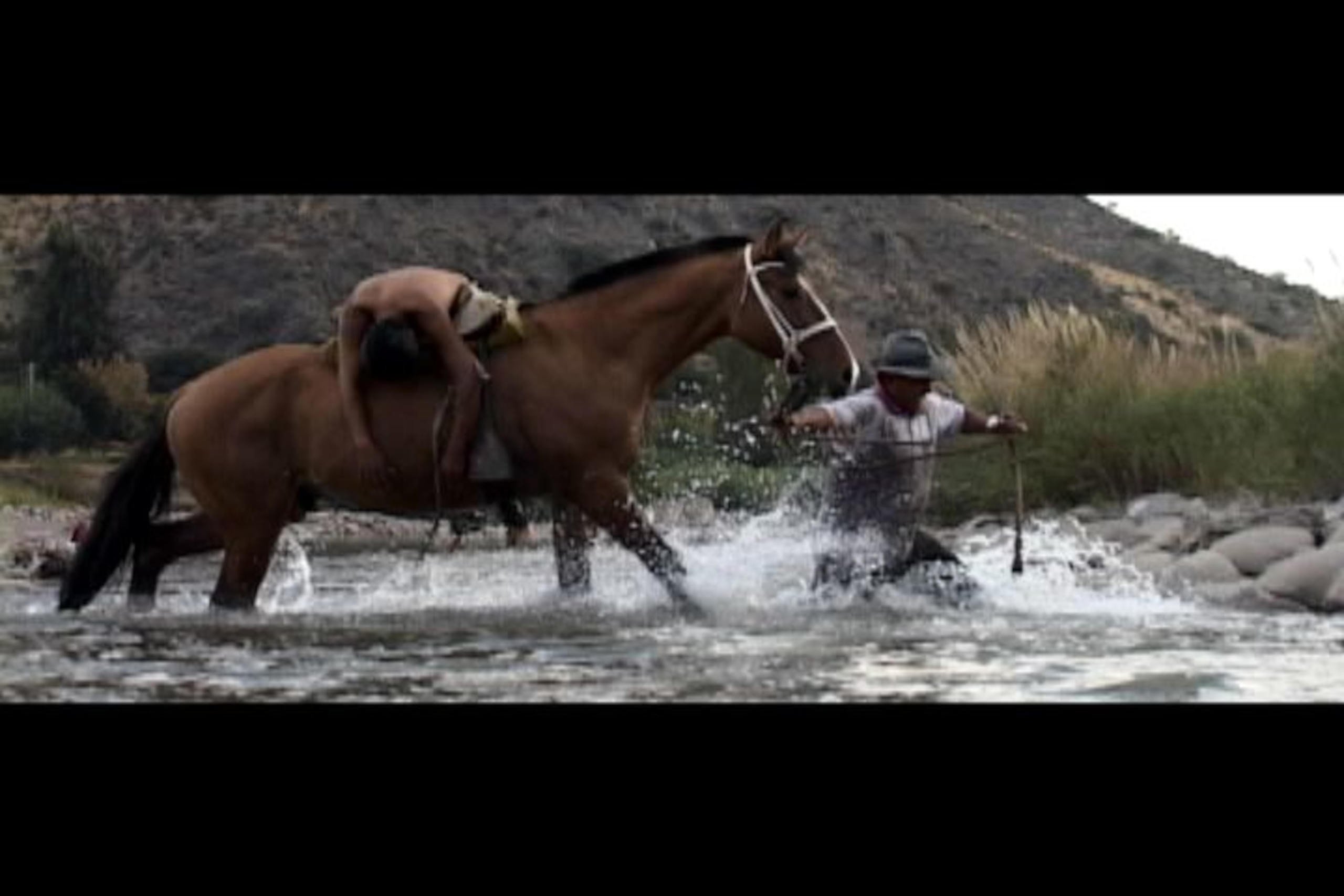The first collaboration between Sepúlveda (direction) and Adriazola (production) begins, naturally, with an ending. A man lies motionless on the stony banks of a river on the outskirts of Santiago de Chile, as though washed ashore. We soon learn that he has tried to commit suicide, and hear him say that he remembers nothing prior to the event. This film can be read as a backwards retracing of what could have led this man to a failed suicide attempt—a journey towards the source, from the outskirts to the city centre. The events do not unfold in reverse, but the editing, by rejecting any causal linearity, maps the character’s discontinuities and contradictions. The structure, which diverges from conventional dramatic principles, and the disjointed editing (two constants in the duo’s work) act like a scalpel on the body of the actor/character (Héctor Silva / Daniel SS). To the vein of direct cinema, this first work superimposes the creation of simulated situations which serve as a basis for improvisation—another process that has become central to the duo’s work. The dialogues take on a performative character: they are more valuable for what they provoke than for what they signify. The film starts to affect the work of the actor and the directors, rather than the other way round. Making a film becomes an act of entering into an open, visceral process, without rules.
Manuel Asín
